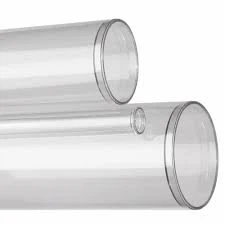Tach . 19, 2024 20:20 Back to list
hdpe pipe electrofusion welding
Electrofusion Welding of HDPE Pipes An Overview
High-Density Polyethylene (HDPE) pipes are widely utilized in various industries due to their excellent chemical resistance, durability, and lightweight nature. One of the most effective methods for joining HDPE pipes is electrofusion welding. This innovative technique offers numerous advantages and is increasingly becoming the preferred choice for many applications.
What is Electrofusion Welding?
Electrofusion welding is a process that involves heating the surface of HDPE pipe components through the use of electrically conductive fusion fittings. These fittings contain a coil of resistance wire, which, when energized, generates heat. This heat melts the surface of the HDPE, allowing the pipe and fitting to fuse together as they cool and solidify. The result is a strong and leak-proof joint that retains the material properties of the HDPE.
Advantages of Electrofusion Welding
1. Strong and Reliable Joints Electrofusion welding produces joints that are as strong as the pipe itself. This is crucial in applications where the integrity of the pipeline must be maintained under high pressure or adverse conditions.
2. Versatility This technique can be used with various sizes and types of HDPE pipes. Whether in water, gas, or industrial applications, electrofusion fittings can accommodate a range of diameters, making it suitable for numerous projects.
3. Ease of Use The process is relatively straightforward and can be performed with minimal training. The necessary equipment is portable and easy to handle, allowing for efficient installation in diverse environments.
4. Reduced Risk of Contamination Unlike other welding methods, electrofusion welding minimizes the risk of contamination since it does not require open flames or additional materials. This feature is particularly important in sensitive applications such as potable water systems.
hdpe pipe electrofusion welding

5. Faster Installation The electrofusion process speeds up the installation timeline. With the use of pre-fabricated fittings and the efficiency of the welding process, projects can be completed more quickly, reducing labor costs and downtime.
Applications of Electrofusion Welding
Electrofusion welding is commonly employed in various applications, including
- Water Distribution The need for reliable and leak-proof connections in water supply systems is paramount. Electrofusion welding ensures that joints can withstand pressure without failure.
- Wastewater Management For sewer systems and wastewater treatment, electrofusion welding provides a secure and durable solution that can resist corrosive environments.
- Gas Distribution The safety and reliability of gas pipelines are crucial. Electrofusion welding allows for the creation of robust joints that meet stringent safety regulations.
- Industrial Applications Many industries rely on HDPE pipes to transport chemicals, slurry, or food products. Electrofusion welding facilitates the construction of complex piping systems that can handle challenging materials.
Conclusion
As industries evolve and the demand for efficient and reliable piping solutions increases, electrofusion welding of HDPE pipes stands out as a top choice. Its robust joining capabilities, versatility, and efficiency make it ideal for a wide range of applications. When implemented correctly, electrofusion welding not only enhances the performance of HDPE pipelines but also contributes to the overall safety and reliability of various infrastructures. With the continuous advancements in technology, the future of electrofusion welding appears promising, ensuring the continued utilization and innovation in HDPE pipe systems.
-
PVC Grey Sheet for Extraction: Chemical Resistant & Durable
NewsAug.19,2025
-
Durable PVC Pipe Fittings for Plumbing & Irrigation Needs
NewsAug.18,2025
-
HDPE Steel Belt Reinforced Spiral Corrugated Pipe | High Strength
NewsAug.17,2025
-
HDPE Pipe Fittings: Durable, Leak-Proof Solutions
NewsAug.16,2025
-
Premium CPVC Sheet: High-Temp & Chemical Resistant Solutions
NewsAug.15,2025
-
Durable PPR Pipe for Hot & Cold Water Systems - Easy Install
NewsAug.14,2025

